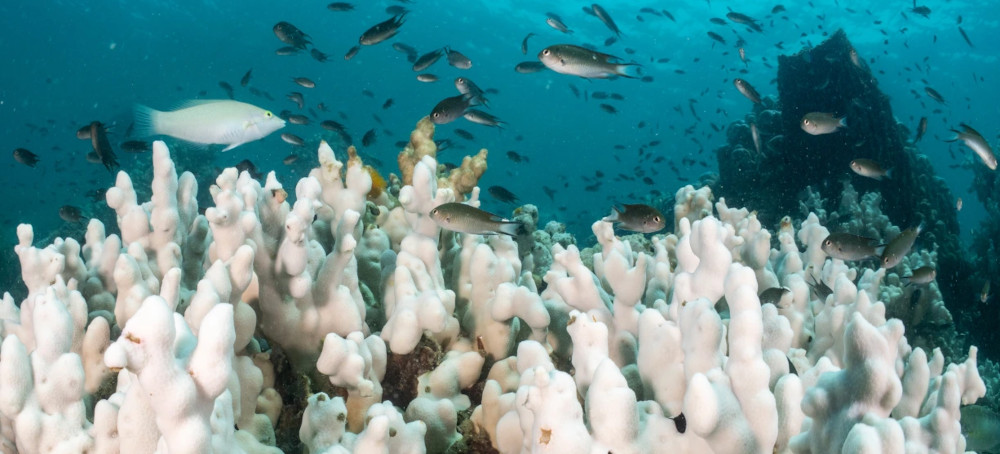World’s Oceans Have Gone “Crazy Haywire,” Officials Warn, With Majority of Coral Reefs in Peril
Denise Chow NBC News A reef affected by coral bleaching from high water temperature in Trat, Thailand. (photo: AFP)
A reef affected by coral bleaching from high water temperature in Trat, Thailand. (photo: AFP)
Conditions last year were so unusually warm in some waters that heat stress levels were literally off the charts of NOAA's alert system.
Derek Manzello, coordinator of NOAA’s Coral Reef Watch Program, said in a news briefing Thursday that around 60.5%, or nearly two-thirds, of the world’s coral reefs have experienced heat stress at levels high enough to cause bleaching, a major health threat.
Coral bleaching occurs as a result of abnormal ocean conditions, such as when water temperatures are unusually warm or cold, or when oceans are more acidic than normal. Corals respond by expelling tiny photosynthetic algae that live in their tissues, causing the normally colorful marine invertebrates to turn ghostly white.
The current threats come on the heels of record-shattering marine heat waves that hit most of the world’s ocean basins last year.
Manzello said that conditions last year were so unusually warm in parts of the Atlantic Ocean, Caribbean Sea and Gulf of Mexico that heat stress levels were literally off the charts of NOAA’s existing alert system.
“We had to add additional bleaching alert levels to appropriately categorize just how hot it was,” Manzello said.
The agency’s updated bleaching alert system, introduced in December, categorizes heat stress on a scale of severity from 1 to 5.
“For an Alert Level 5, we are estimating that approximately 80% or more of corals on a particular reef may die,” he said. “This is analogous to a Category 5 hurricane or cyclone.”
Daily monitoring of ocean conditions around the world, released by NOAA’s Coral Reef Watch, shows zones of Bleaching Alert Level 4 in the central Pacific Ocean and off the Atlantic coast of South America, with some ribbons of Alert Level 5 in the southern Atlantic.
The impacts have been widespread, Manzello said: Bleaching “has occurred in at least 62 countries and territories since February 2023, spanning both the northern and southern hemispheres of all ocean basins.”
Manzello added that water temperatures in the Atlantic, in particular, have been the “most unprecedented and extreme” and said 99.7% of Atlantic reef areas have experienced bleaching-level heat stress within the past year.
Bleaching does not necessarily kill corals, but the process causes reefs to become more susceptible to disease.
Last month, NOAA confirmed that the planet is experiencing a global coral bleaching event due to record-high ocean temperatures made worse by climate change and a natural climate cycle known as El Niño.
El Niño events are characterized by warmer-than-usual sea surface temperatures and tend to exacerbate background warming from climate change.
The last global coral bleaching event lasted from 2014 to 2017 and affected 56.1% of the world’s reefs, according to NOAA.



